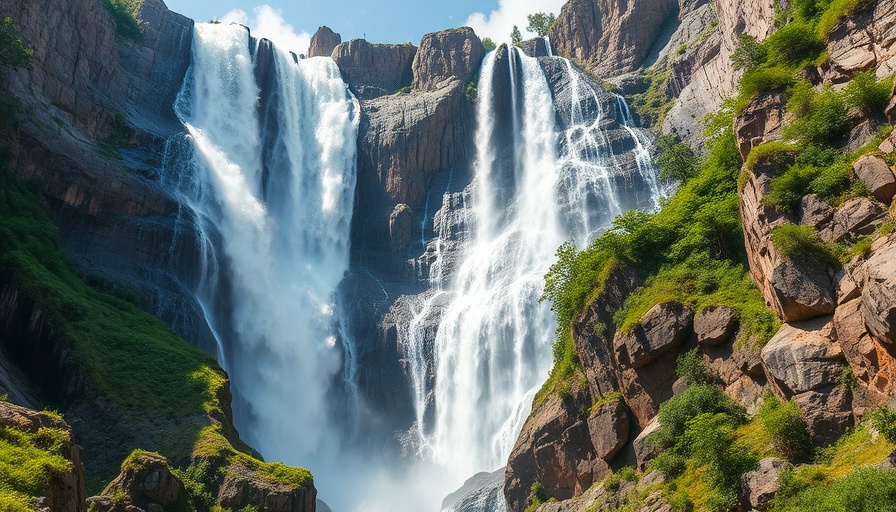
A Dive into the Majesty of Howick Falls
Nestled in the lush landscapes of KwaZulu-Natal, Howick Falls captivates visitors with its stunning drop of 95 meters. Known as KwaNogqaza or the 'Place of the Tall One' in Zulu culture, this breathtaking waterfall has a rich tapestry of history and cultural significance that beckons both travelers and locals alike. The waterfall is not just a natural wonder; it is a symbol of the area's people, stories, and traditions.
The Historical Significance of Howick Falls
The historical narrative surrounding Howick Falls is as compelling as its scenic grandeur. The area once served as a crucial crossing point over the Mngeni River, particularly in the 1800s, where a rough wagon track posed challenges for those seeking to travel between farmlands. Floods made crossing perilous, adding an air of adventure to the region’s history.
Perhaps the most tantalizing tale involves an event from November 1850 when a tragic incident marked the area’s lore. A large wagon, unable to withstand the rain-swollen river's might, led to a loss of two men as it plunged into the tempest below the falls. This poignant story has been passed down through generations and enhances the profound respect the local communities hold for the land.
A Cultural Connection to the Natural World
Why does Howick Falls resonate so deeply with the Zulu people? The answer lies in the waterfall's interconnectedness with local folklore and traditions. The falls are viewed as a sacred site, often woven into the stories of spirits and ancestors. These stories foster a sense of stewardship among the locals, urging them to preserve the natural beauty for future generations.
Tourism and Its Impact
As tourism grows around Howick Falls, there is a vital balance to maintain between showcasing this natural wonder and preserving its sanctity. The influx of visitors supports local businesses and promotes cultural awareness, yet there’s a palpable need for responsible tourism practices to ensure that this majestic waterfall remains unblemished for years to come.
Engaging with Howick Falls Today
Today, Howick Falls continues to attract adventure seekers and nature lovers, each looking to immerse themselves in its beauty. Whether it's the roar of water crashing into the depths below or the stunning views from the surrounding lookout points, each visitor leaves with a story to tell. Locals offer guided tours, sharing stories and insights that enrich the experience. It’s a beautifully immersive encounter with nature and culture, reminding us of the stories hidden in every drop of water.
Lifting the Veil on Local Experiences
To truly appreciate Howick Falls, one must engage with the local community. The nearby town of Howick boasts a plethora of small shops, restaurants, and art galleries where visitors can find unique souvenirs and taste local cuisine. It's here that the human connection becomes evident—where your experience at the waterfall transforms into conversations with locals who share their lives and cultures openly. These exchanges are often the heart of travel, leaving visitors with cherished memories and friendships.
As the sun sets over Howick Falls, its presence continues to influence the narrative of the land. The waterfall is more than just a sight to see; it's a powerful expression of the region’s heritage, showcasing the resilience and vibrancy of the local communities.
 Add Row
Add Row  Add
Add 




Write A Comment